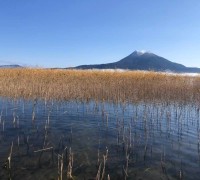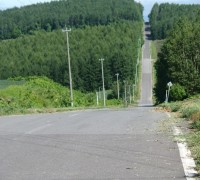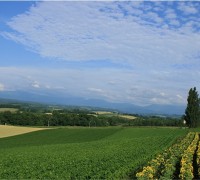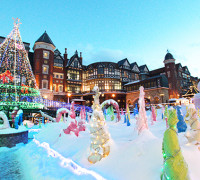
Hokkaido displays a burst
of vivid autumn colours in sunny September and October. One of the most spectacular displays may be in the area around Mt. Asahidake, the highest mountain in Hokkaido. The golds, reds, russets, oranges, and yellows that flare up provide a burst of joy before they fall down like a welcome mat for the winter.
The Japanese are well known as cherry-blossom-viewing lovers in the
spring. We have planted cherry trees almost everywhere. In old Japanese poems, the word “flower” basically means nothing but “cherry blossom”.
In the fall, autumn colour viewing is popular as well. Similar to cherry
blossom viewing, it started in the Heian period (794-1195). The common thread woven into both events is ephemeral beauty.
Japanese culture is greatly influenced by Buddhism, which adheres to the
concept that all things are constantly changing and nothing in this world is permanent. Like cherry blossoms, autumn leaves show their vivid colours only a week then scatter quickly. The short period of beauty is associated with the concept that all things must pass.
The Meteorological Agency predicts when the best time to view autumn
colours and cherry blossoms are in certain areas. We call them the autumn colour front and the cherry front respectively.
The cherry front starts from Okinawa, Japan’s southernmost island in
January and moves toward the north, ending up in northern Hokkaido at the end of May. In contrast, the autumn colour front starts at Mt. Asahidake in Hokkaido in the middle of September and moves toward the south.
Aside from the season, the main difference between the two events is
barbecue. It is a common scene to see people enjoying a barbecue under a cherry tree in spring, but people never make barbecue under a tree of autumn leaves. It is because the autumn is too cold to do it.
People come to Mt. Asahidake, with a height of 2,291m, in Hokkaido in the
middle of September to enjoy the first autumn colours in Japan. You climb or you can ride a cable car to view the coloured mountain from the Seventh Station. While riding on the cable car or walking along the mountain trail you can get different views at different altitudes.
Another spot I recommend for viewing the autumn colours is Tenninkyo
Gorge. It takes only a 25-minute drive from Mt Asahidake. The gorge is surrounded by a columnar rocky face. Mountains in the Daisetsu Mountain Range, which includes Mt. Asahidake, erupted about 30,000 years ago and spewed a pyroclastic flow that piled up to a 150m to 200m height. After it got cold and became solid, it formed quadrilateral or hexagonal columnar joints. Then the river carved it to create the Tenninkyo Gorge over a period of more than 10,000 years. This activity also created Hagoromo Falls, which was selected as one of Japan’s Top 100 Waterfalls.
In the Tenninkyo Gorge, you can enjoy scenery in which the autumn
colours are beautifully mixed with the columnar jointing and the waterfall.
Japan is said to be one of the places where you can see the most beautiful
autumn colours in the world. Come and experience their beauty for yourself. Enjoy!
RELATED ARTICLES
-
The Odori Park in Sapporo
-
Double-flowered cherry tree are beautifully blooming.
-
The spectacular night view of Sapporo
-
Marimo at Lake Akan
-
What is a trip for kids?
-
Beautiful Japanese Crane Tancho in Kushiro, Eastern Hokkaido
-
Ecorin Village in Eniwa: A Town of Flowers and Ecology
-
Pleasurable Farming Tours in Hokkaido
-
Experience Contemporary Ainu Art at the Foot of Mt.Hakkenzan
-
The present-day Ainu and Iomante -from the story of th...





















